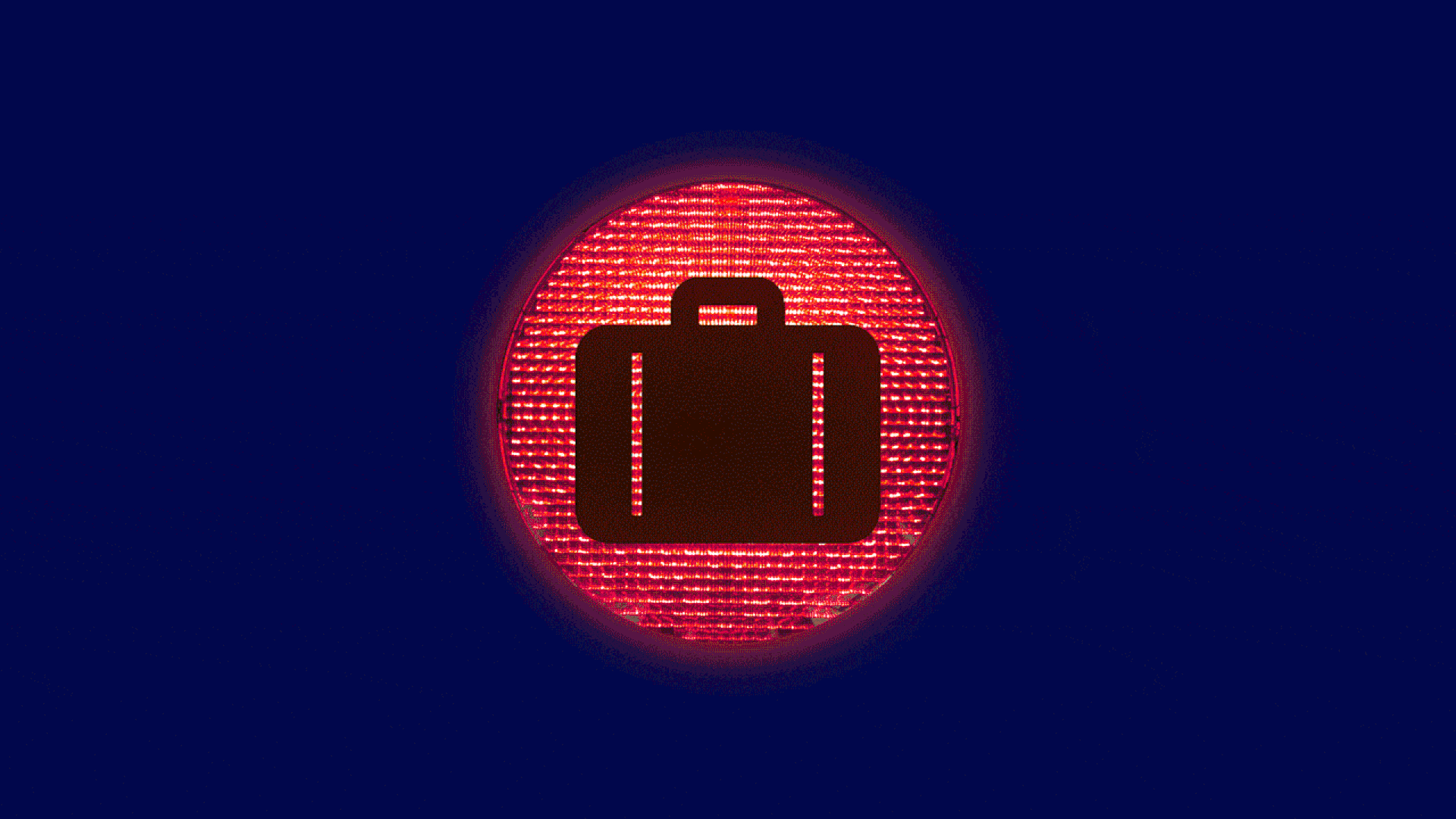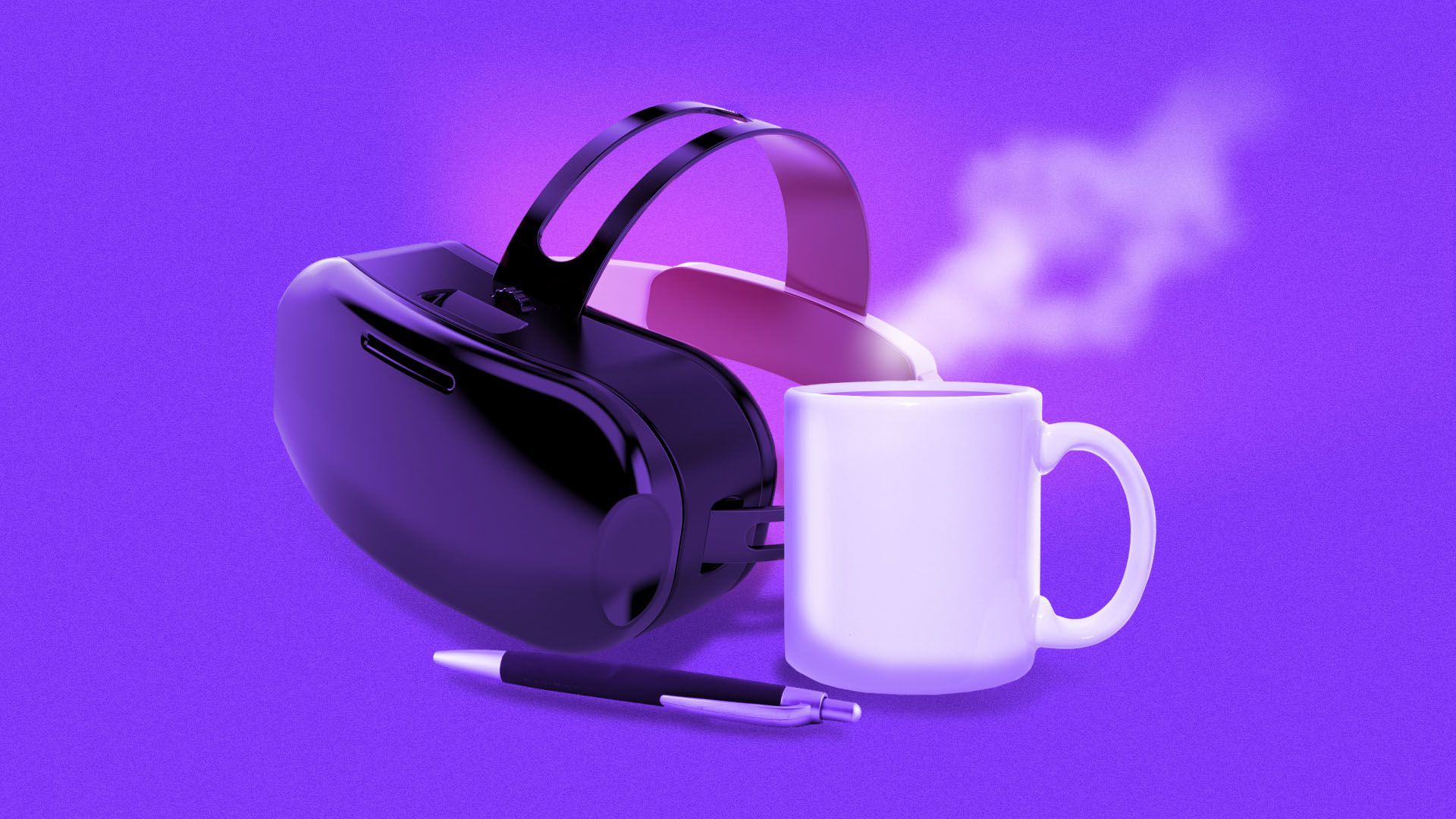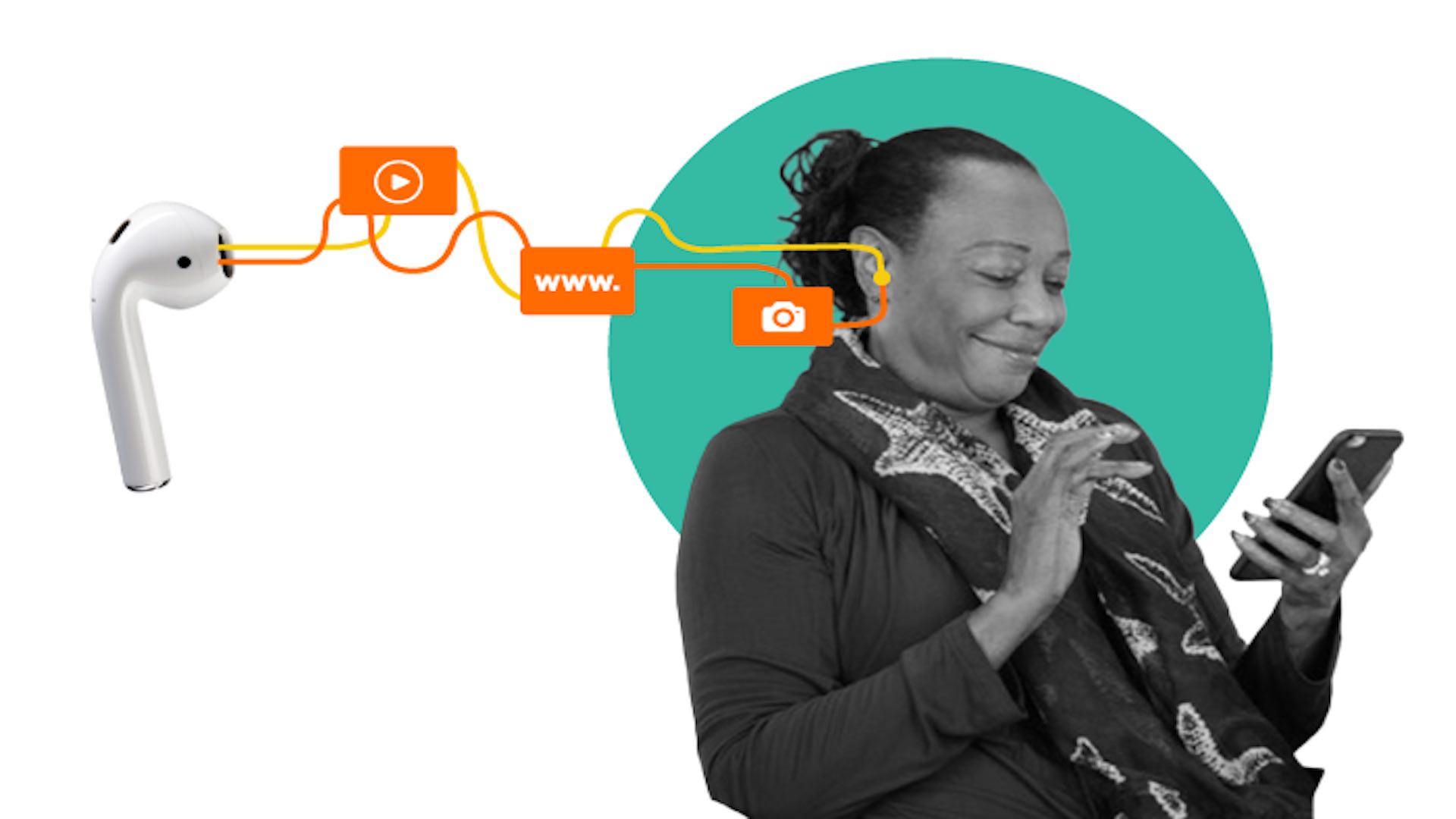| | | | | | | Presented By Giide | | | | Axios @Work | | By Erica Pandey ·Dec 16, 2020 | | Welcome back to @Work. Send your thoughts on this week's newsletter to erica@axios.com or start a conversation on Twitter @erica_pandey. - This is the final 2020 edition of @Work. I'll be back in your inboxes on Jan. 6 with more work and workplace news and analysis.
- Also, I'm filling in for my colleague Niala Boodhoo as host of the "Axios Today" podcast for the next week or so as she takes some time off! If you're looking to add some smart brevity to your morning routine, listen here.
I've got 1,629 words for you this morning — a 6-minute read. Let's start with... | | | | | | 1 big thing: A year of monumental change in the workplace... |  | | | Illustration: Annelise Capossela/Axios | | | | In less than a year, the pandemic shot us more than a decade ahead in the workplace transformation. The big picture: The pandemic's acceleration of telecommuting has changed much more than the way we attend meetings. We'll see lasting impacts on company culture, the job market, demographics and cities. Driving the news: There is no denying the staying power of remote work. - Around 80 million Americans will be working remotely in 2021, according to a new Upwork survey.
- By 2025, that number will drop to around 38 million. But that's still an 85% increase in the number of teleworkers when compared with pre-pandemic levels, says Adam Ozimek, Upwork's chief economist.
- "This is not just an adaptation we're accepting for a single year," he says. "In the long run, a significant share of the workforce is going to be fully remote."
Nine months in, here's what we know about this rapid and massive shift to teleworking: 1. We're rethinking where we work and live. - Around 20 million Americans are planning to leave dense and costly metros like New York and San Francisco and move to cheaper cities.
- Companies like Oracle, Hewlett Packard Enterprises and Tesla have announced plans to move headquarters out of California.
- In big cities, office vacancies are reaching unprecedented levels, reports the Wall Street Journal.
But, but, but: The pandemic won't kill the modern office. - The majority of workers won't be remote full-time. For example, Google just extended its remote work timeline to September 2021, but rejected the idea of permanent remote work and told employees they should live within commuting distance so they can come to the office at least part-time.
- Cities will still be the center of business activity, says Julie Whelan of the commercial real estate firm CBRE. Look for "third workplaces" to gain popularity after the pandemic, she says. People might not want to go to the office, but they won't want to stay home either and might choose a coffee shop or co-working space instead.
2. What matters to us at work is changing. After months away from the office, in-person perks like free snacks or stunning city views don't matter as much. - People increasingly care about company culture and belonging, and that will be a key factor in firms' abilities to recruit and retain talent.
- Nearly a fifth of U.S. workers say their companies aren't doing enough to make employees feel connected, and those who say their companies aren't doing enough are twice as likely to say they feel burned out, according to an employee sentiment survey conducted by Glint and provided to Axios.
- Companies that don't address culture and burnout issues will have a tough time maintaining productivity in 2021.
3. Companies have accelerated their adoption of workplace technology. "The average company has increased their use of technology in six months what they otherwise would have done in six years," says Alexandra Levit, an author and an expert on the workplace. - It's not just tech that facilitates remote work, like messaging apps or video calling platforms, she says.
- The pandemic has pushed companies to increase their adoption of emerging technologies like artificial intelligence, robotics and machine learning as they attempt to conduct business while minimizing human-to-human contact.
- Firms are also incorporating new forms of surveillance technology in the name of safety.
4. We have more workplace flexibility. - Getting dressed up for work seems superfluous now, and people have ditched business formal — and even business casual — for loungewear.
- After the pandemic exposed the stresses working parents quietly deal with, companies are weighing alternatives to the 9–5, five-day workweek.
The bottom line: The pandemic will be remembered as the great accelerant. These are all trends that were coming, "but they would have taken several more years to kick in," says Levit. |     | | | | | | 2. ...and a year of erased progress |  | | | Illustration: Annelise Capossela/Axios | | | | The pandemic didn't just move us forward, it also moved us back, erasing decades of workplace progress and deepening existing societal inequalities. Why it matters: It could take years to reach the levels of equity that existed before the coronavirus ravaged the U.S. economy. 1. A generation of American women has been set back. In February, before the pandemic, women in the U.S. hit a milestone. For the first time in history, they held the majority of non-farm payroll jobs, outnumbering men in the workforce. - Since then, nearly 900,000 women have dropped out of the labor force, primarily due to pandemic-era child care responsibilities.
2. The pandemic has deepened the divide between the two worlds of work. "We're seeing a really strong dichotomy between white-collar and blue-collar work," says Levit, the workplace expert. "We treat our front-line workers like cogs in the machine." - Front-line workers represent around 80% of the workforce, but they've received just 1% of the tech investment since the onset of the pandemic, per Levit's research.
- While companies dove into providing mental health resources and Zoom happy hours to keep their white-collar workers sane and happy, little attention was paid to burnout among essential workers.
Go deeper with my reporting on these troubling trends from earlier this year: |     | | | | | | 3. Vaccinated at work |  | | | Illustration: Sarah Grillo/Axios | | | | The next big office debate: Can employers force staff to take vaccines to return to work? Why it matters: The short answer is that employers can create such requirements, with some wiggle room. - The law lets both public and private organizations require vaccinations, and schools, hospitals and a host of other institutions have long done so.
- "Lawyers could argue that prior cases didn't consider a drug authorized only for emergency use by the F.D.A., as the early coronavirus vaccines will be. Or perhaps a more conservative-leaning Supreme Court would be open to revisiting prior precedent," per the New York Times' Andrew Ross Sorkin.
The big picture: Anthony Fauci, the country's top infectious disease expert, has said that life cannot return to normal until around 75% of America is vaccinated, but many Americans remain skeptical. The bottom line: Companies could play a key role in upping vaccination numbers by asking their employees — or even their customers — to take it. Go deeper: Sorkin spoke with executives about their thoughts on requiring worker vaccinations. |     | | | | | | A message from Giide | | Your business content isn't being heard | | |  | | | | To communicate more effectively, companies are turning to Giide, a software that lets users create interactive audio messages. - Giide is used globally for remote meetings, onboarding, and even CEO updates.
The result: Deeper engagement with employees and customers. | | | | | | 4. Rethinking the gig economy |  | | | Illustration: Eniola Odetunde/Axios | | | | There's a small, but growing number of companies that are attempting to flout the Uber, Lyft and Instacart model and redefine the gig economy. Why it matters: Gig work is rapidly spreading through the labor market, but there are ways to bring more stability to these jobs. One of the key arguments from companies like Uber and Instacart is that their models offer flexibility, but workers don't have to be contractors to reap those benefits, says Will Coleman, CEO of Alto, a ride-sharing startup that employs all of its drivers with full benefits. - "It's a false trade-off," he says. "At least half of our employees drive part-time, and many have other jobs."
On the other end of the spectrum, companies like Dumpling want workers to truly be independent and run their own small businesses. - Dumpling provides grocery shoppers with an app to manage their work and charges them a flat monthly fee. It's also recently started to expand to car rides.
Another emerging model in the gig world is worker-owned apps that are trying to increase pay for workers by eliminating the corporate middle man. - Up & Go, a home-cleaning app owned by immigrant workers in New York City, pays $25 an hour, which is more than double what cleaners typically make, reports Vice. The app also only takes a 5% cut from workers, compared with the industry standard of 20%.
What to watch: Look for gig economy alternatives that claim to treat workers more fairly to gain traction among younger consumers, who are increasingly likely to support companies and brands that align with their values. Worth the click: Read the Axios business team's deep dive on gig work, led by my colleague Kia Kokalitcheva. |     | | | | | | 5. Two signs of the times | | Here are two anecdotes from this week that illustrate the times we live in: - Oracle co-founder Larry Ellison has moved to Hawaii. He's embracing the work-from-anywhere trend and told employees he won't be regularly coming into headquarters in Austin, Texas.
- Teleperformance Group, a call center company worth $13 billion and headquartered in France, says it is hiring 20,000 remote American workers, as telecommuting is expected to be quite common in the post-COVID economy.
|     | | | | | | 6. Worthy of your time |  | | | Illustration: Sarah Grillo/Axios | | | | The virtual reality office (Axios) - While offices remain closed and travel isn't an option, some companies are turning to virtual reality. Let's face it: Slack sessions and Zoom happy hours can only go so far to promote company cohesion. VR can provide another outlet, even if the technology is still in its infancy.
The rise of employee activism (Quartz) - Workers — white collar and blue collar alike — are organizing in the thousands to protest issues like structural racism, sexual harassment and low wages at their firms.
Why the office isn't going away (Wall Street Journal) - The Journal's Peter Cappelli wraps up a year of remote work trends and concludes that physical offices will be more popular than we might think. One big reason: 58% of American adults say they've dated someone at work. You can't do that from home.
Is virtual business school worth the cost? (New York Times) - Getting an MBA from a top school can cost well over $100,000 — and much of that proposed value is delivered through chance encounters and informal networking. Students are rethinking whether business school is worth it in the era of Zoom.
|     | | | | | | 7. 1 fun thing: A coronavirus Christmas dinner |  | | | Photo: Maia Pandey (my younger sister) | | | | For this year's Christmas dinner, my mom is taking inspiration from all of America's restaurants that figured out year-round outdoor dining. - I'm heading home for the holiday to Lexington, Massachusetts, for the first time since the start of the pandemic. I've gotten a coronavirus test and will be driving home to avoid exposure on public transit, but we still wanted to figure out the safest possible way to gather around the same dinner table.
- My mom set up a temporary dining room in the garage with doors open for better airflow. And we're using Solo cups for easy and safe disposal.
- I'm crossing my fingers for a relatively mild New England winter evening...
Wishing all @Work subscribers a very happy and safe holiday! |     | | | | | | A message from Giide | | The key to capturing people's attention with your content | | |  | | | | Businesses are struggling to reach their customers and employees who already have too much to read. Imagine being able to deliver an audio message embedded with links to video, articles, surveys and more. Find out why so many companies around the world are turning to Giide. | | | | Thanks for reading! | | | | Axios thanks our partners for supporting our newsletters.
Sponsorship has no influence on editorial content. Axios, 3100 Clarendon Blvd, Suite 1300, Arlington VA 22201 | | | You received this email because you signed up for newsletters from Axios.
Change your preferences or unsubscribe here. | | | Was this email forwarded to you?
Sign up now to get Axios in your inbox. | | | | Follow Axios on social media:    | | | | | |









No comments:
Post a Comment